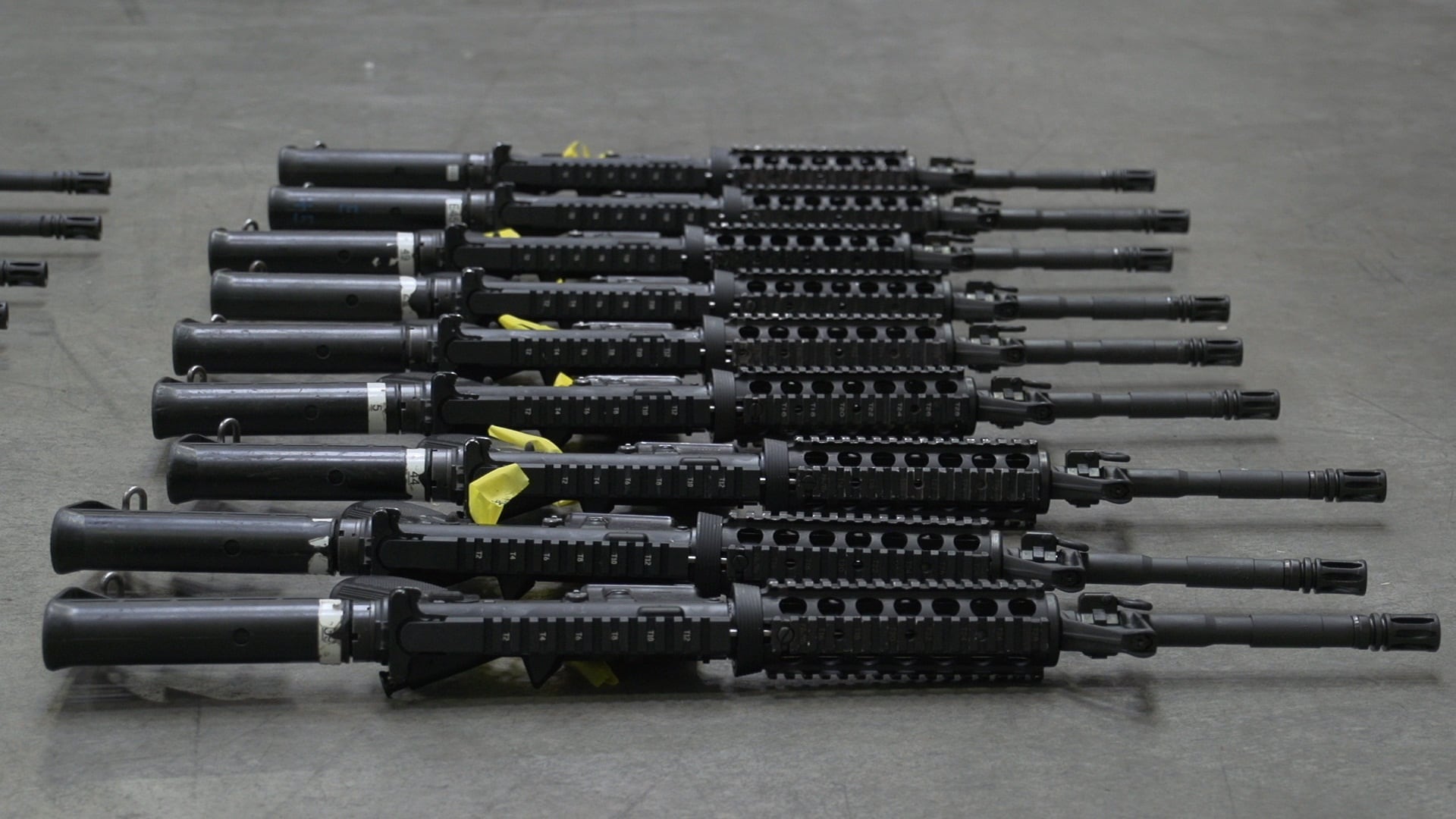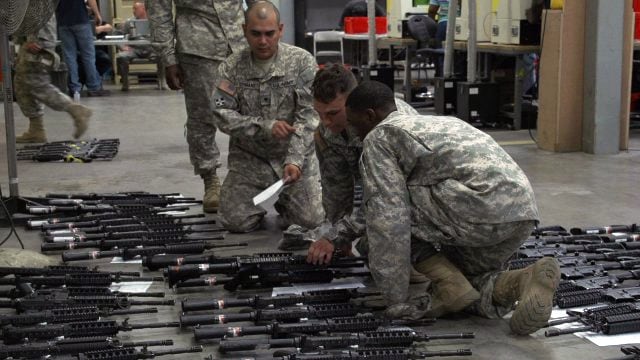Some soldiers know the M4A1 carbine rifle — which the M4A1+ program aims to augment – better than others. That's because they already received one. Others, such as those at Fort Bragg, North Carolina, are mid-transition. If you're stationed at Fort Campbell, Kentucky — you're next.
The Army elected to upgrade to the M4A1, used for special operations since 1994, after scrapping a multi-year effort to replace the carbine system altogether, with the Army citing mounting costs and questionable gains.
The re-vamp of the M4 includes a heavier barrel, ambidextrous safety controls and conversion from three-round burst to fully automatic.
The Army has competed transitions at Fort Riley, Kansas; Fort Stewart and Hunter Army Airfield, Georgia; and Fort Drum, New York, according to Rowland.
Partial upgrades have been made to 8th Army's M4s in Korea and Fort Bragg. Fort Campbell was to begin receiving the M4A1s in June, once the Army finished at Fort Bragg.

The M4A1 includes a heavier barrel, ambidextrous safety controls and conversion from 3-round burst to fully automatic.
Photo Credit: Army
The Army is also replacing M16s with M4A1s, though so far only 1 one percent of that initiative is complete. The official M16 replacement program will start in earnest this January. The Army has a roughly even split of M4 and M16 rifles.
Lt. Col. Terry Russell, project manager for Individual Weapons at Picatinny Arsenal, Russell noted that reports of M4 failures during battle, particularly in the hotly contested Korengal Valley in Afghanistan (including Operation Rock Avalanche, the battle portrayed in the documentary "Restrepo") helped drive the push to make the M4A1 standard-issue. Heat from heavy firing was warping barrels.
"(The M4A1) allows us to fire a better suppressing fire," Russell said. "At some point, a barrel is going to bend. It could be solid steel, but as soon as you reach a certain heat point it's going to do some damage to the barrel. ... But (the improved barrel) would have helped out to a certain degree."
Russell noted the "heavier" barrel itself is only a few ounces heavier in weight; the enhanced design also contributes to improved resistance to heat. The M4 as a whole weighs about a quarter-pound less than the M4A1.
While deciding how to upgrade the M4, the Army concurrently held a competition to replace the Colt product line of M16 and M4 rifles wholesale. Russell said the concurrent upgrade and replace initiatives always represented a "dual path" to improving Army carbines, rather than the cancelled competition prompting a move to upgrade to M4A1 instead.
Some, including former Oklahoma Sen. Tom Coburn, spoke out against the M4, arguing for years that it lagged competitors in reliability. But the Army ended the Individual Carbine Competition in 2013, saying no competitors offered enough improvement to justify the cost. The M4A1 rollout started roughly a year later.
Rowland said reliability data for today's M4 and M4A1 indicate a 98.3 percent probability of completing a mission with a basic ammunition load (209 rounds) without failure.
Russell said the Maneuver Center of Excellence designed the M4A1 requirements for a replacement based on its needs in terms of accuracy, reliability and other areas. None of the competitors, he said, met all of them. While acknowledging opponents who argued that the requirements went too far, he said the leap in capabilities of a new system had to be substantial considering the costs.
"Requirements are set to do something you want, not something to just do better than what you have. If it can't, it goes onto the shelf until technology catches up," Russell said. "I do believe the M4A1 is the best carbine issued to a military force in the world right now. The M4A1 plus will be a continuation of that."





